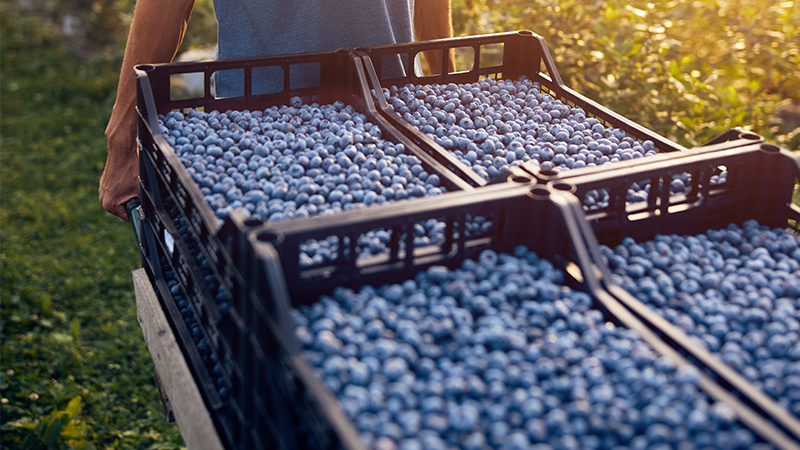Early Leaf Drop Can Decimate Next Year’s Almond Crop
Almond trees leaf out and defoliate naturally in the spring and fall. This is a function of responses to day length and temperature. Healthy trees retain their leaves the maximum number of days possible since the longer the leaves are attached, the longer they are able to provide photosynthates and other products that strengthen overall tree health and increase bud viability for the following year.
Sometimes, environmental factors can stress trees, resulting in premature defoliation. These can include cultural factors such as water stress or chemical phytotoxicities. Diseases such as scab, rust, or Alternaria can completely defoliate a tree months before dormancy. Pests such as spider mites also can cause almond leaf drop.
Defoliation during early leaf out at bloom can reduce crop set or result in smaller kernels due to these stresses during the important nut cell-division period. If defoliation occurs during the crop development period from spring through early summer, cell enlargement is affected, and kernel sizes will be smaller, or shrivels will increase. Any factor that results in leaf losses or damage during nut development will reduce the production of carbohydrates, fats, and proteins. This will slow both kernel and root development.
Timing is Everything
In most instances, the greatest concern about the impacts of early defoliation is during the harvest and postharvest periods. This is the time of the year when trees are most likely to be exposed to deficits in irrigation due to harvesting. This is also the time of year when the summer foliar diseases and spider mites are most likely to cause premature defoliation. During this period, flower buds are differentiating for subsequent years’ cropping. Loss of leaf function will result in weakened buds or potentially non-viable buds if the stress is severe enough.
When trees prematurely defoliate during summer, the timing of this occurrence is as relevant as the severity of the event. If during hullsplit, the negative effects on the current season’s crop is minimized, since most dry weight accumulation has been completed. Also, with the next irrigation, the trees refoliate early enough during the season that fully expanded leaves are present for several weeks, improving the likelihood of completing bud differentiation on the shoots.
If these stresses and defoliation occur later in the season (late September thru October), there is a greater chance that the next year’s bud set will be negatively affected. When trees defoliate during this period, by the time they start to refoliate it may be late October or early November. When this happens, the re-leafing process has a net-negative contribution of photosynthates since the energy wasted to re-leaf is not offset by a sufficient duration of mature leaf function to create these products before the tree goes dormant. Thus, differentiating buds are shorted during this critical development period. Controlled deficit irrigation studies have verified these effects on the following year’s crop when water is intentionally withheld during this critical period.
Water After Late-season Drop
Another observation that is common with late-season defoliation is flower buds pushing in November or early December. When trees prematurely defoliate in late October to early November, the evenings are much cooler and some chill hour accumulations have started. With a late irrigation at this time (or the first fall rains), it is not uncommon to see several flower buds push during re-leafing in November or even December if the fall is mild. These blossoms are obviously not available to set a crop in February, thus are lost yield potential.
A common dillema for growers is whether or not to irrigate after harvest if trees defoliated for whatever reason during harvest. The fear is re-leafing versus just letting the trees stay dormant. In my opinion, water needs to be applied in most cases to promote the continued bud differentiation, even if re-leafing occurs. Unless the early leaf drop occurred at the very end of the growing season just days before the start of natural leaf fall, water is usually beneficial. Phytophthora root rot risk is another factor to consider if waiting too late (past mid-October). In most cases, early defoliated trees will begin leafing on their own with what moisture is left in the soil anyway, or most certainly will with the first significant rain. Thus, if re-leafing is inevitable, it is better that these leaves function for the maximum amount of time before going dormant.










